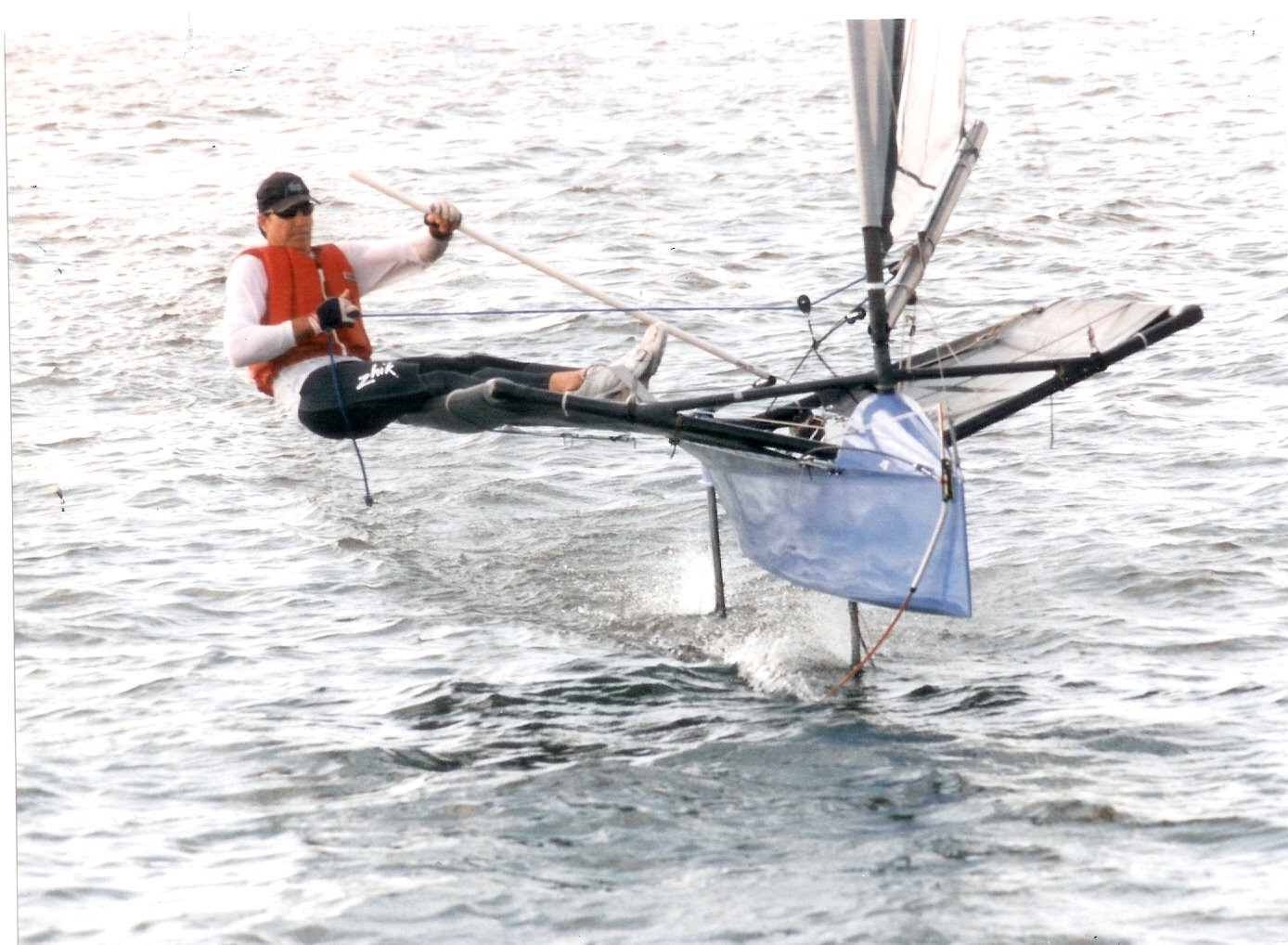
Mike at Aardvark Racing has also recently posted a pic of his Axiom's rudder foil with upswept tips. So I started thinking about wing tips. Anyone who's flown commercial has seen winglets on jets, from small corporate-types to wide-bodied long distance haulers. The theory is straightforward - reduce the tip vortex and get an effectively longer span resulting in more lift with less drag. So why don't we see them on aircraft tail horizontal fins? Probably because on a plane, the wing generates almost all of the lift and the horizontal component of the tail is lightly loaded and acts primarily as a stabilizer, as opposed to the configuration of most moths where the rudder foils generate a substantial portion of the total lift (30%???). So wingtips on moth foils should be of some benefit. But on the rudder? With the rudder's foil swinging with every twitch of the tiller, I wonder if the wingtips on the Axiom are helping or hurting? Rudders can be shaped to reduce the stall angle by tweaking the shape of the leading edge, but I would think the leading edge of a winglet would be so thin that a stall of the winglet would easily occur at relatively small angles of attack.
The centerboard's main lifting foil, on the other hand, while still changing its angle in the slipstream as the boat's heading is changed, undergoes a much smaller differential in angular amount per unit time than the rudder's foil. So perhaps wingtips on the main foil make more sense. I'm not an naval architech or designer, although I wish I was sometimes, so these thoughts are just my ruminations about what's happening "down there." And no, I haven't be talking with Doug Lord....
 Here's another thought: why not a rudder set-up similar to an aircraft's rudder with non-pivoting vertical and horizontal sections and the actual rudder as a hinged flap off the back of the fixed fin. Racing shells often have the rudder as an articulated section off the back of the fin (and yes I know that rowing shells don't have to turn 90 degrees in a couple of seconds...) But with such a set-up the rudder's lifting foil could benefit from wing tips just like the main foil. Of course, there is still the method of rudder articulation (perhaps a pivoting rod inside the fixed vertical section?) The mechanics are for the engineers, but I would reckon with an articulated vertical flap (maybe 50-60% of the chord), an articulated horizontal flap would be out of the question and the whole rudder gantry would need to be canted to affect AOA of the rudder's lifting foil. Heck, I'm just tossing out what-ifs...
Here's another thought: why not a rudder set-up similar to an aircraft's rudder with non-pivoting vertical and horizontal sections and the actual rudder as a hinged flap off the back of the fixed fin. Racing shells often have the rudder as an articulated section off the back of the fin (and yes I know that rowing shells don't have to turn 90 degrees in a couple of seconds...) But with such a set-up the rudder's lifting foil could benefit from wing tips just like the main foil. Of course, there is still the method of rudder articulation (perhaps a pivoting rod inside the fixed vertical section?) The mechanics are for the engineers, but I would reckon with an articulated vertical flap (maybe 50-60% of the chord), an articulated horizontal flap would be out of the question and the whole rudder gantry would need to be canted to affect AOA of the rudder's lifting foil. Heck, I'm just tossing out what-ifs...So much for thinking out loud, my next class is about to start and I need to get back to the maths. Maybe sailing tonight after work is in the cards.



4 comments:
Hi Joe,
I actually have one of these rudders (I just bought one off of mike last month) and I have to say it certainly is a sexy piece of kit (mine isn't pink though!) As to whether it works or not who knows? I certainly don't as I'm not a good enough moth sailor to determine the answer. I would say that like you I agree that it makes sense to reduce the vortex...
Phil at mothflyers.co.uk
But don't you think tips on the main foil make more sense?
joe the rear horizontals on a passenger plane generate a downwards lift vector btw
i would say at certain points 70% of total lift is generated by my rudder.
Post a Comment